




Definition of the Pendulums
Have you ever visited your grandparents' house and seen an old large clock? These clocks are usually old, wooden with a big swinging metallic object attached. This swinging metallic object usually moves from one side to the other as long as the clock keeps working. This object is known as the Pendulum.
(Image will be uploaded soon)
Pendulum Clock
The definition of the Pendulum: It is the weight that hangs from a wire or string, and the string is attached to a fixed point from one end. It was discovered by a renowned Italian scientist known as Galileo in the 1500s. Let’s now see about the pendulum path, how does a pendulum work and much more.
The Movement of a Pendulum
The movement of a Pendulum is directly connected to how a pendulum works. Since the weight, known as the bob, hangs from a string it must be pulled and then released for the movement to begin. If one side is pulled taut and then released the pendulum will start swinging from one side to the other without twisting or spinning.
The resting position of the Pendulum is known as its fixed equilibrium position. Pulling the string causes displacement of the bob from the equilibrium position. When the string is released, it causes the pendulum to move back and forth passing the equilibrium position in a constant and repeating motion. This form of movement is known as Periodic movement.
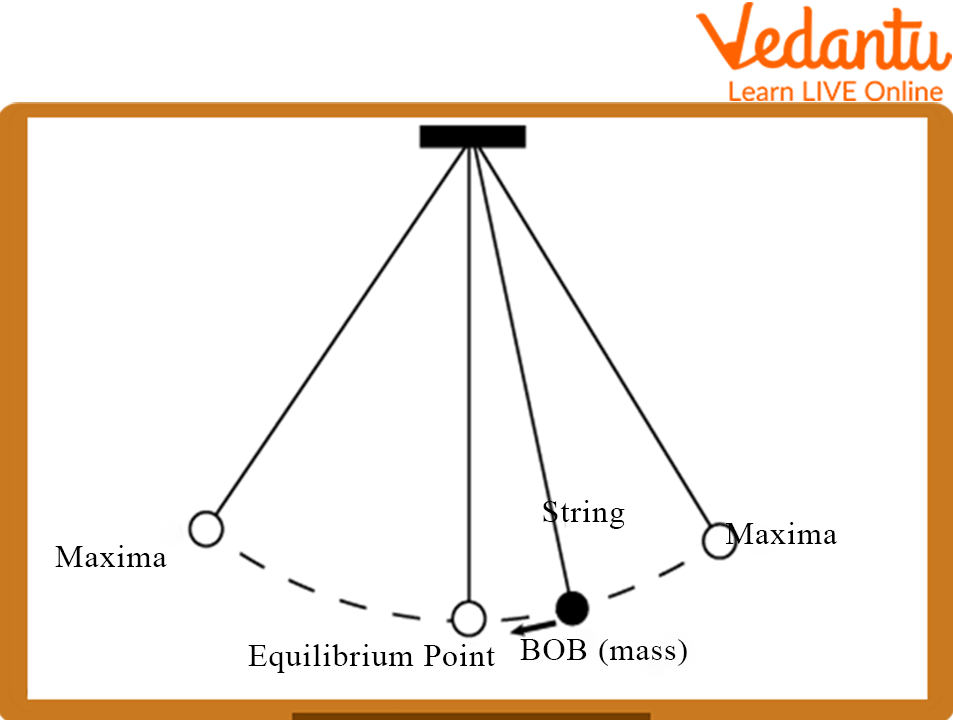
Pendulum’s Path
Explanation of How a Pendulum Moves
The pendulum's path and speed of movement are usually determined by the earth’s gravitational force as well as the size of the string the bob is attached to. As the pendulum moves over time its displacement and speed decrease until it stops back at its Equilibrium position. The cause for the pendulum stopping is air friction or resistance.
As the swing of the Pendulum is an example of Periodic Motion (it is constant), the path of the pendulum from point A to Point B, no matter where the points are located on the path, will always take the same amount of time.
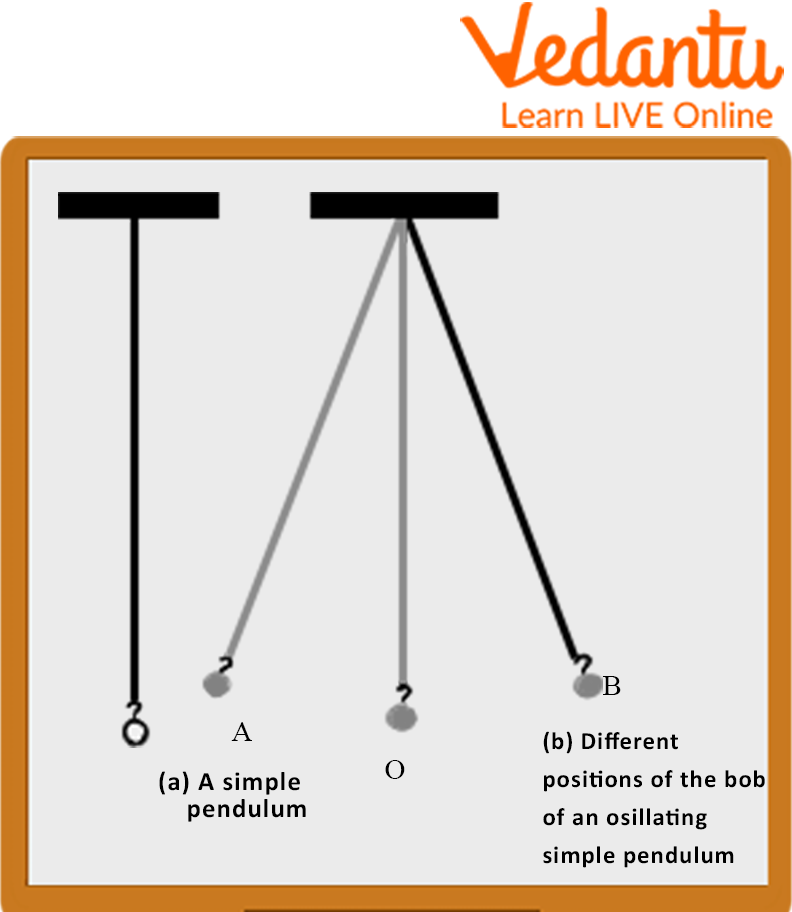
Movement of a Pendulum
Types of Pendulums
There are 4 types of Pendulums
1. Simple Pendulum
A simple pendulum is a weight on the end of a string, rope or wire that swings back and forth above its pivot. The time taken to complete one cycle of swinging motion varies according to its length.
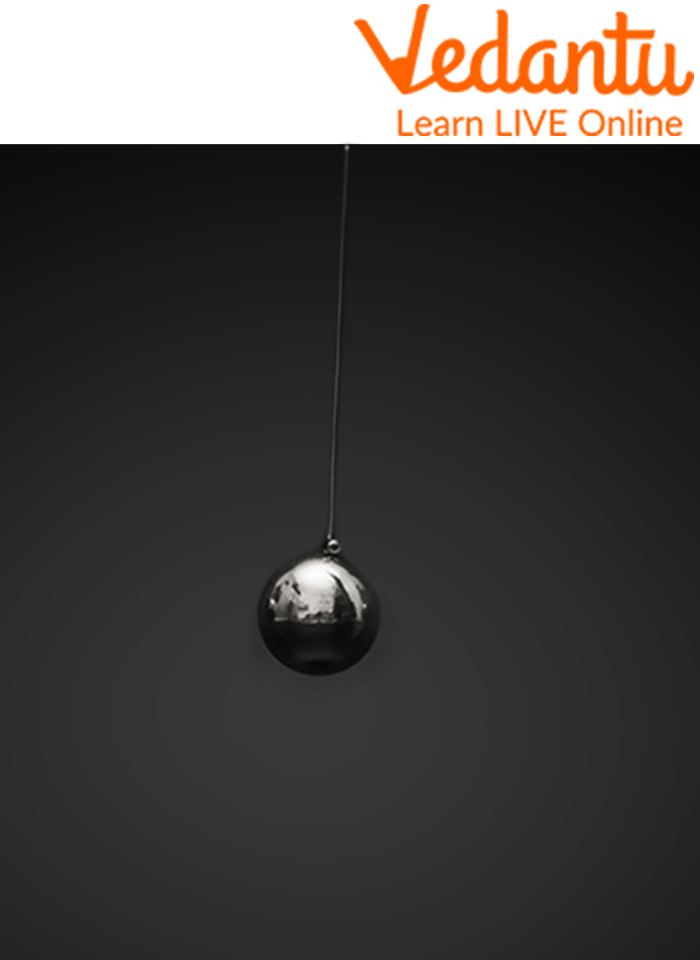
Simple Pendulum
2. Foucault Pendulum
Foucault's Pendulums were created by suspending a long metal rod from the ceiling of the laboratory so it just barely touched the floor and then set it in motion.
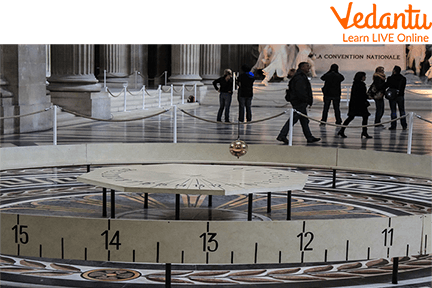
Foucault Pendulum
3. Torsion Pendulum
A torsion pendulum is a type of simple harmonic oscillator with a vertical bar suspended from its centre by a thin, rigid rod and free to rotate around the support. It is related to but different from a conventional pendulum, which has two pivot points rather than one.

Torsion Pendulum
4. Physical Pendulum
A physical pendulum is a weight suspended from a rigid bar so that it swings about its axis under the influence of gravity; it usually has just one point of support or anchor attached to that bar, called the weight's centre.
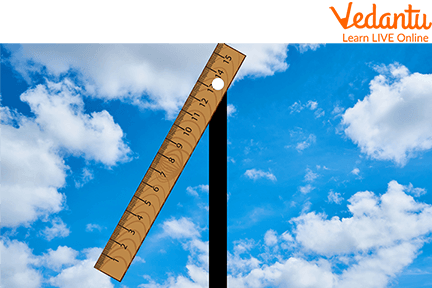
Physical Pendulum
Pendulums in Clocks
Pendulums were added to clocks in the 1600s to make clocks more accurate. As the Pendulum swings at a regular rate, it keeps the other parts of the clock also working at the same rate. In Pendulum Clocks the movement of the hands of the clock is dependent on the swing of the pendulum.
Pendulum Reading
Pendulums can also be used for objects and processes other than clocks and telling time. Pendulum reading refers to the use of a pendulum for spiritual or psychic processes or rituals. Some of the most common ones used are - using a pendulum to decide between two difficult options, using a pendulum for hypnosis, etc.
Interesting Facts About Pendulums
Some interesting facts about pendulums include:
Pendulums were discovered by Galileo
Jean Foucault was a scientist who used the pendulum to prove that the earth rotates on its axis. The kind of pendulum he used was named the Foucault Pendulum after him.
Pendulums were added to clocks in the year 1660 by a Dutch Scientist called Christain Huygens
Summary
We have learnt about Pendulums, their working, how to read pendulums, the Pendulum path and much more. Now we know that Pendulums are in their simplest form a string with a weight called the bob attached to it on one end that swings forward and back in respect to its resting place. The pendulum moves in a constant periodic motion and the speed of this movement as well as the distance reduces due to air friction. Pendulums can be used in experiments as well as be used in clocks. Pendulums can also be used for psychic or spiritual purposes such as pendulum readings. We hope you enjoyed reading this article. In case of any other doubts, feel free to ask in the comments.
FAQs on How does a Pendulum Work?
1. How does a simple pendulum work?
A simple pendulum works due to the force of gravity. When the pendulum's bob is pulled to one side and released, gravity pulls it back towards its lowest point (the equilibrium position). It gains speed and overshoots this position, swinging up the other side. Gravity then slows it down, stops it, and pulls it back again. This continuous back-and-forth movement, known as oscillation, is driven by the constant conversion between potential energy (at the highest points) and kinetic energy (at the lowest point).
2. What are the main components of a simple pendulum?
A simple pendulum consists of three essential parts that allow it to demonstrate periodic motion. These are:
Pivot: A fixed, frictionless point from which the pendulum is suspended.
String or Rod: A light, inextensible cord or rod that connects the bob to the pivot.
Bob: A small, heavy mass (often a metal sphere) attached to the end of the string.
3. What do 'oscillation' and 'time period' mean in the context of a pendulum?
In the context of a pendulum, one oscillation is one complete swing. For example, it is the motion of the bob from one extreme position to the other and back to the starting position. The time period is the specific amount of time the pendulum takes to complete exactly one full oscillation. This regularity is why pendulums are excellent for timekeeping.
4. How is a pendulum used in a grandfather clock to measure time?
A grandfather clock uses a pendulum as its primary timekeeping element because a pendulum of a specific length has a very consistent and predictable time period. Each swing of the pendulum takes the same amount of time. This regular swing controls an escapement mechanism, which allows the clock's gears to advance by a small, precise amount with each swing, moving the clock's hands forward at a constant rate.
5. What factors determine the time period of a simple pendulum?
The time period of a simple pendulum is primarily determined by its length—the distance from the pivot to the center of the bob. A longer pendulum has a longer time period (swings slower), while a shorter pendulum has a shorter time period (swings faster). The acceleration due to gravity also plays a role, but for a given location on Earth, it is constant. Importantly, for small swings, the mass of the bob and the width of the swing (amplitude) do not significantly affect the time period.
6. Is it true that a heavier pendulum bob will swing faster than a lighter one?
No, this is a common misconception. The time it takes for a pendulum to complete a swing is independent of the bob's mass. While gravity exerts a greater force on a heavier bob, the heavier bob also has more inertia (resistance to change in motion). These two effects cancel each other out, so a heavy bob and a light bob on strings of the same length will swing at the same rate.
7. Why does a pendulum eventually stop swinging in the real world?
A pendulum eventually stops swinging because of energy loss due to two main forces: air resistance and friction. As the bob swings, it pushes against air particles, which creates a drag force that slows it down. Additionally, there is friction at the pivot point where the string is attached. These forces gradually convert the pendulum's mechanical energy into a small amount of heat, causing the swings to become smaller until it comes to a complete stop.
8. What is the difference between a simple pendulum and a physical pendulum?
The key difference lies in how mass is distributed. In a simple pendulum (an ideal model), we assume all the mass is concentrated in a single point-mass (the bob) at the end of a massless string. In a physical pendulum (a real-world object like a clock's pendulum), the mass is distributed throughout the entire swinging object, including the rod itself. This makes the calculations for its motion more complex than for a simple pendulum.
9. How was a special pendulum used to prove that the Earth rotates on its axis?
This was famously demonstrated by Léon Foucault in 1851 using a Foucault Pendulum. He suspended a very heavy bob from a long wire, allowing it to swing freely. The plane of a pendulum's swing remains fixed in its orientation. However, as the Earth rotated beneath the pendulum, observers on the ground saw the direction of the swing slowly change throughout the day. This apparent change was direct evidence that the ground itself was moving, proving the Earth's rotation.









